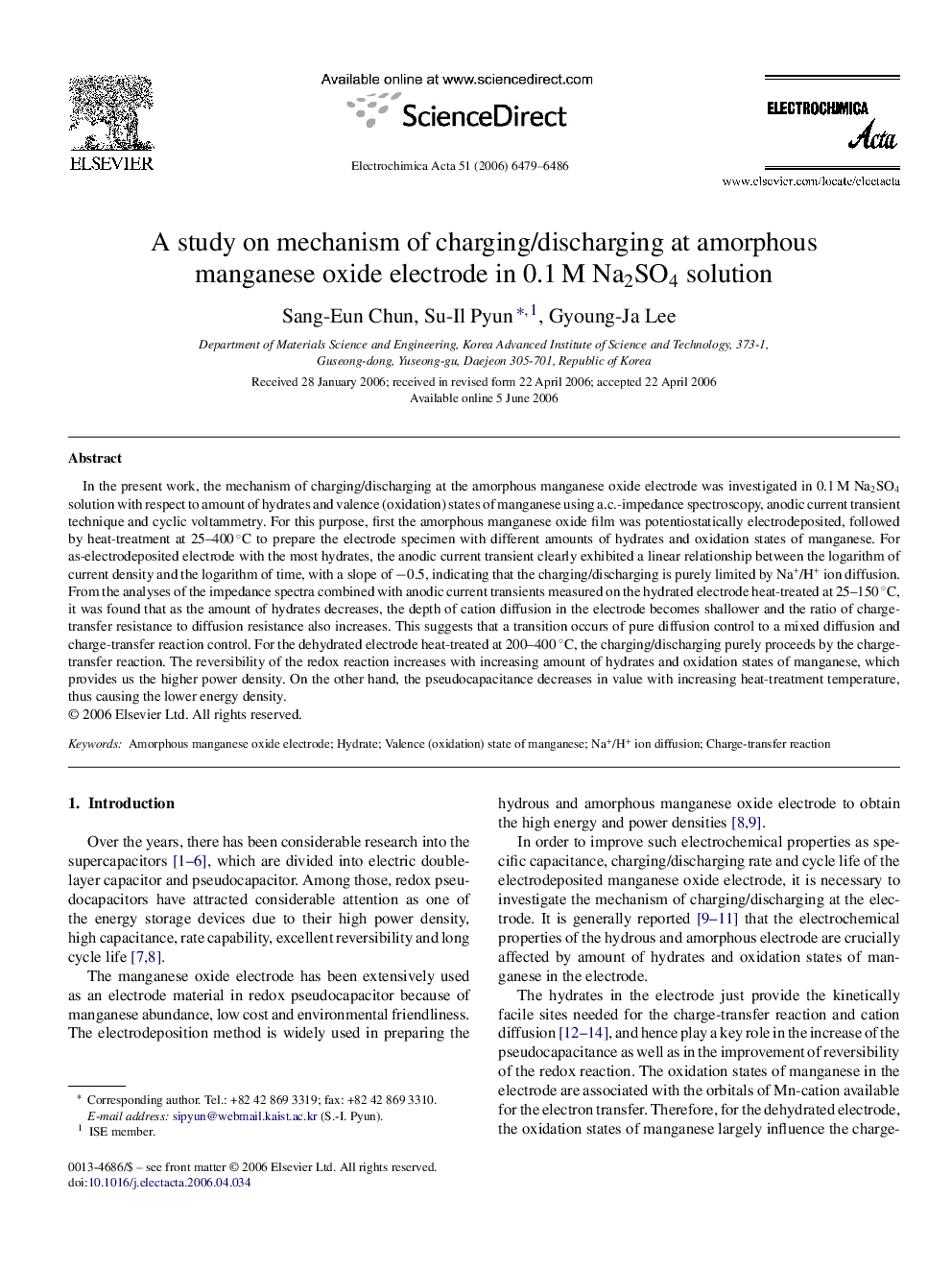| کد مقاله | کد نشریه | سال انتشار | مقاله انگلیسی | نسخه تمام متن |
|---|---|---|---|---|
| 195015 | 459804 | 2006 | 8 صفحه PDF | دانلود رایگان |

In the present work, the mechanism of charging/discharging at the amorphous manganese oxide electrode was investigated in 0.1 M Na2SO4 solution with respect to amount of hydrates and valence (oxidation) states of manganese using a.c.-impedance spectroscopy, anodic current transient technique and cyclic voltammetry. For this purpose, first the amorphous manganese oxide film was potentiostatically electrodeposited, followed by heat-treatment at 25–400 °C to prepare the electrode specimen with different amounts of hydrates and oxidation states of manganese. For as-electrodeposited electrode with the most hydrates, the anodic current transient clearly exhibited a linear relationship between the logarithm of current density and the logarithm of time, with a slope of −0.5, indicating that the charging/discharging is purely limited by Na+/H+ ion diffusion. From the analyses of the impedance spectra combined with anodic current transients measured on the hydrated electrode heat-treated at 25–150 °C, it was found that as the amount of hydrates decreases, the depth of cation diffusion in the electrode becomes shallower and the ratio of charge-transfer resistance to diffusion resistance also increases. This suggests that a transition occurs of pure diffusion control to a mixed diffusion and charge-transfer reaction control. For the dehydrated electrode heat-treated at 200–400 °C, the charging/discharging purely proceeds by the charge-transfer reaction. The reversibility of the redox reaction increases with increasing amount of hydrates and oxidation states of manganese, which provides us the higher power density. On the other hand, the pseudocapacitance decreases in value with increasing heat-treatment temperature, thus causing the lower energy density.
Journal: Electrochimica Acta - Volume 51, Issue 28, 15 September 2006, Pages 6479–6486